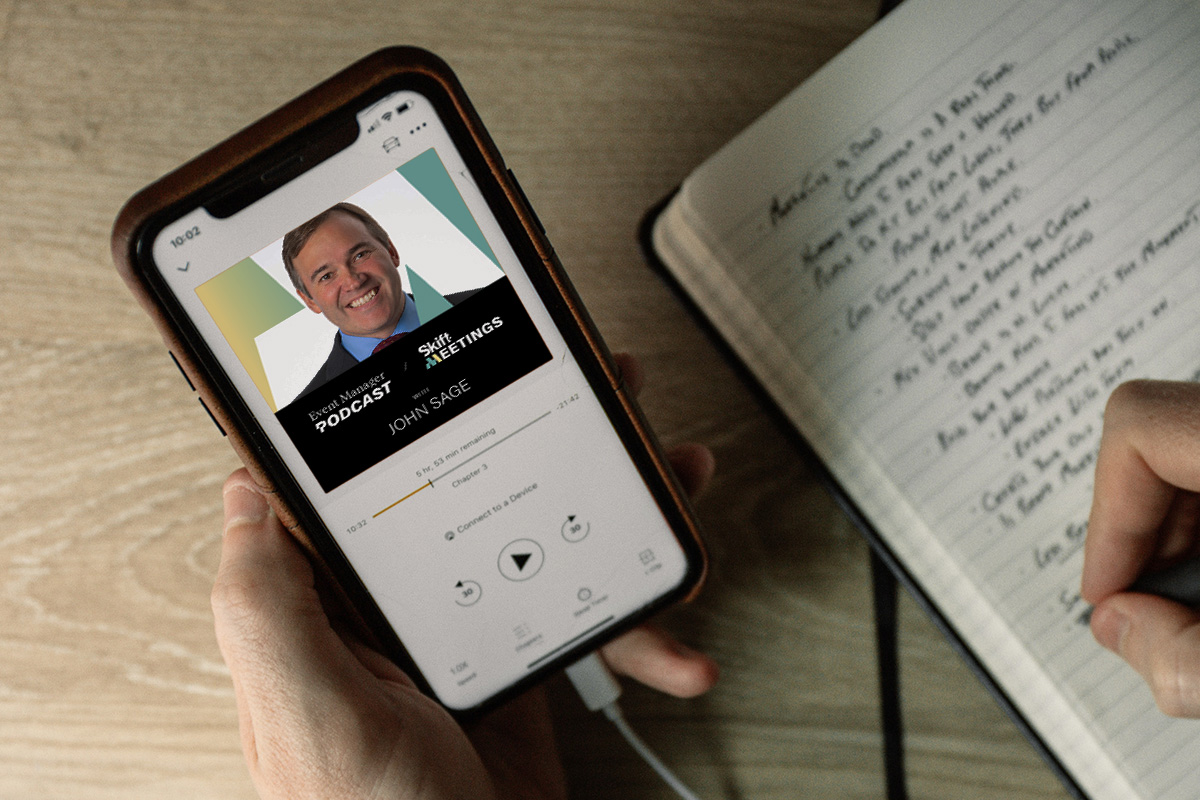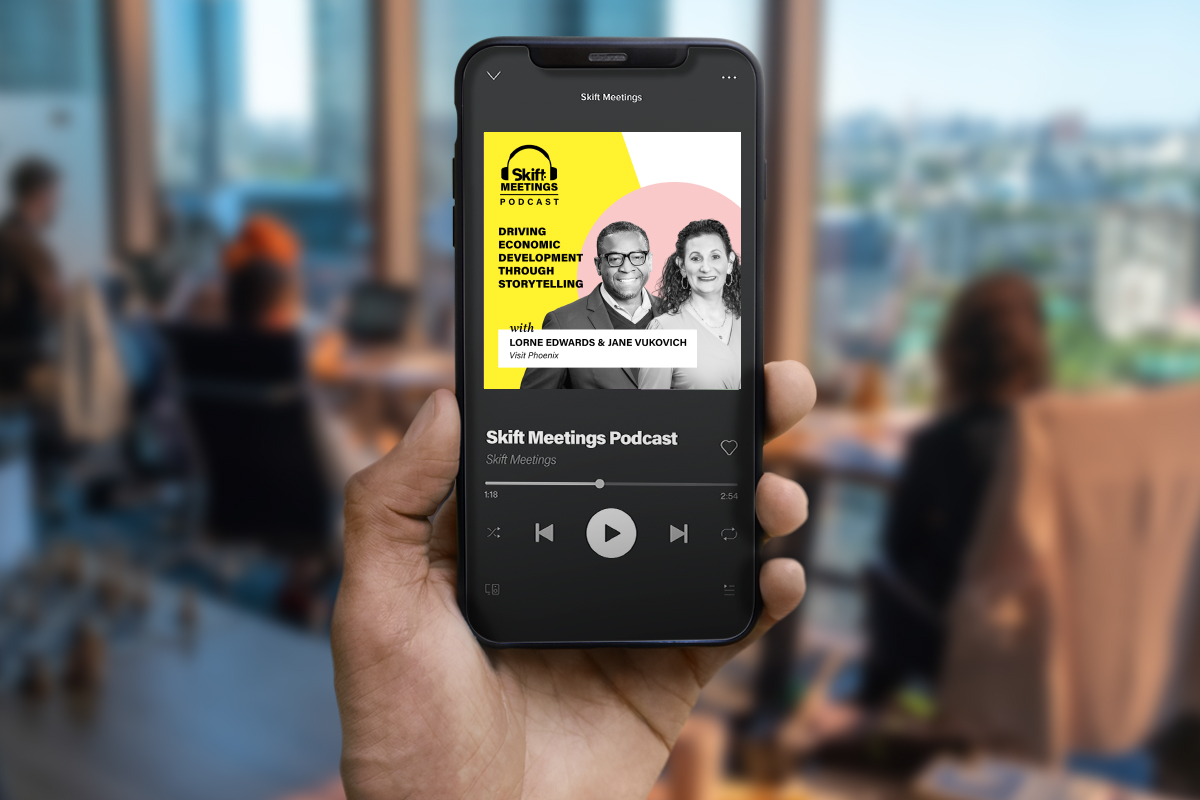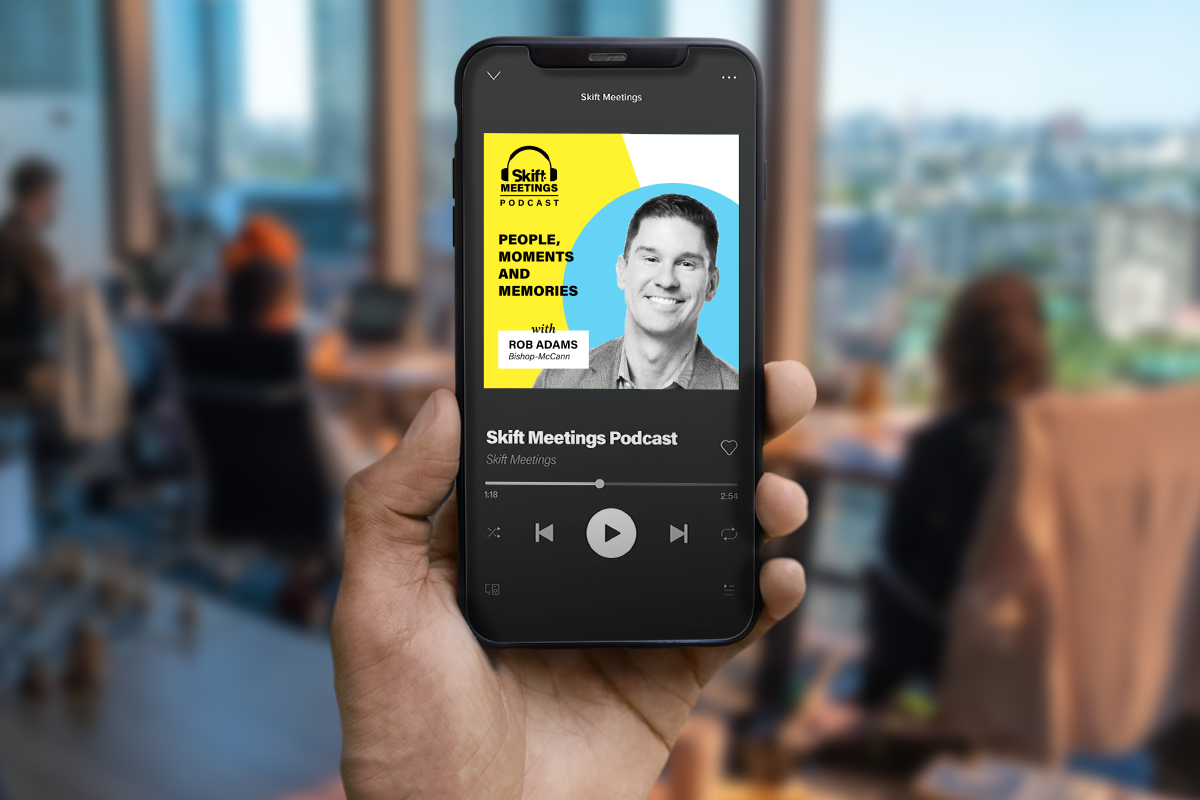John Sage is a manual wheelchair user, after sustaining a T-4 incomplete spinal cord injury in a snow-skiing accident in 2001 at age 22. Since then he has traveled to Europe over 16 times and visited over 140 cities. In planning for his visits, he would research the destination’s level of accessibility, which was a time consuming process. Once there, he’d often think that he would have done things differently, and with this in mind he decided to start a company that helped people with disabilities plan trips of their own. The company, Accessible Travel Solutions, has continued to grow and they now not only work with travelers but also businesses, Destination Marketing Organizations, travel agencies and others within the industry to provide the best experiences possible for travelers with disabilities.
Subscribe to the Skift Meetings Podcast: Apple Podcasts | Spotify | Overcast | Pocket Casts | Google Podcasts | Amazon | RSS
When it comes to events that get it right when it comes to accessibility, Sage notes that those that have done it well have often been lucky, explaining that he has yet to see an event which has proactively sought out a venue or location with accessibility in mind.
This year alone Sage has visited a number of countries in various continents, all for travel conferences, and all had accessibility challenges. John talks through what he thinks should be the process of event planning that ensures that luck is not a factor but instead accessibility is an intentional step in the planning process. He notes that companies can send someone to see the venue in person and make an assessment on its suitability, but he also cautions that in most cases people often don’t know what needs to be taken into consideration as companies rarely have an accessibility expert.
Some events provide attendees with the opportunity to provide details on any accessibility requirements during the registration process, but Sage notes that it can be difficult for attendees to provide all of the information on what they may require on a full trip ahead of time, for a variety of reasons, which can then be difficult for an organization or event to implement these requirements. Therefore, Sage believes that the responsibility for accessibility should not be on the attendee but on the event organizer, in line with the guidelines and laws that are in place.
Sage feels that a lot of improvements with regards to accessibility come back to training, however a lot of event staff are temporary, therefore how do we make this work? This leads to the accessibility customer service levels:
- General: focusing on disability etiquette and the various types of disabilities and potential associated needs
- Role specific: focusing on knowledge and information needed for carrying out a role
- Location specific: focusing on information about a specific venue or location
Sage also notes that a lot of people with disabilities don’t self identify as disabled, but they do have an accessibility need. With this in mind, Sage believes that the best approach to ensure people are comfortable with the venue and location would be to allow all attendees to view the accessibility features, giving them the opportunity to decide ahead of time if they will need any additional assistance. Sage and his team believe that accessibility information has four components in order to be truly effective:
- Accurate
- Detailed (measurements of doors, bathrooms etc.)
- Clear (having good quality photos is best)
- Comprehensive
Sage believes that some treat accessibility as a check-box exercise, but the work that they have done, whilst often well intentioned, isn’t going far enough to gain the attendee or traveler’s confidence and make them want to book, meaning that the company isn’t seeing a return on their investment. He also notes that when accessibility is done right, companies should talk about it, using the work they’ve done as a selling point.
Looking to the future, Sage believes that meetings and events are in a unique position to make a difference by incorporating accessibility into everything that the do and in turn can influence other organizations, for example when evaluating destinations or venues a planner can ask to see what that organization is doing in accessibility, and he believes this could lead to locations noting this and making changes.
Head to your favourite podcast app now to hear this episode in full. Hit subscribe one you’re there to ensure you never miss an episode.





